“Each of us is carving a stone, erecting a column, or cutting a piece of stained glass in the construction of something much bigger than ourselves.” – Adrienne Clarkson
Sid Meier’s Civilization: A New Dawn is a board game for two to four players in which a player attempts to lead their civilization to greatness by expanding their influence to establish new cities, gathering resources to build wonders, and making technological advancements. Players must also increase their military strength and reinforce their cities to defend against attacking barbarians and other players. The first player to meet the victory conditions in the military, science, economy, industry, or culture domain will win the game.
Civilization: A New Dawn is the third board game that recreates Sid Meier’s Civilization video game experience. The two previous games played between four and eight hours and involved complicated turn phases that required players to retain twenty-five pages of finely printed rules. This game, however, claims to be unlike the others in that it is fast-paced with turns as easy as choosing a single card to take an action. What other changes has this new design made to the usual Civilization gameplay? Will this latest release live up to the well-loved previous editions of Sid Meier’s Civilization?
Setup Overview
A game of Civilization: A New Dawn begins with players randomly choosing one of eight leader sheets (civilizations) and all the components in their player color.
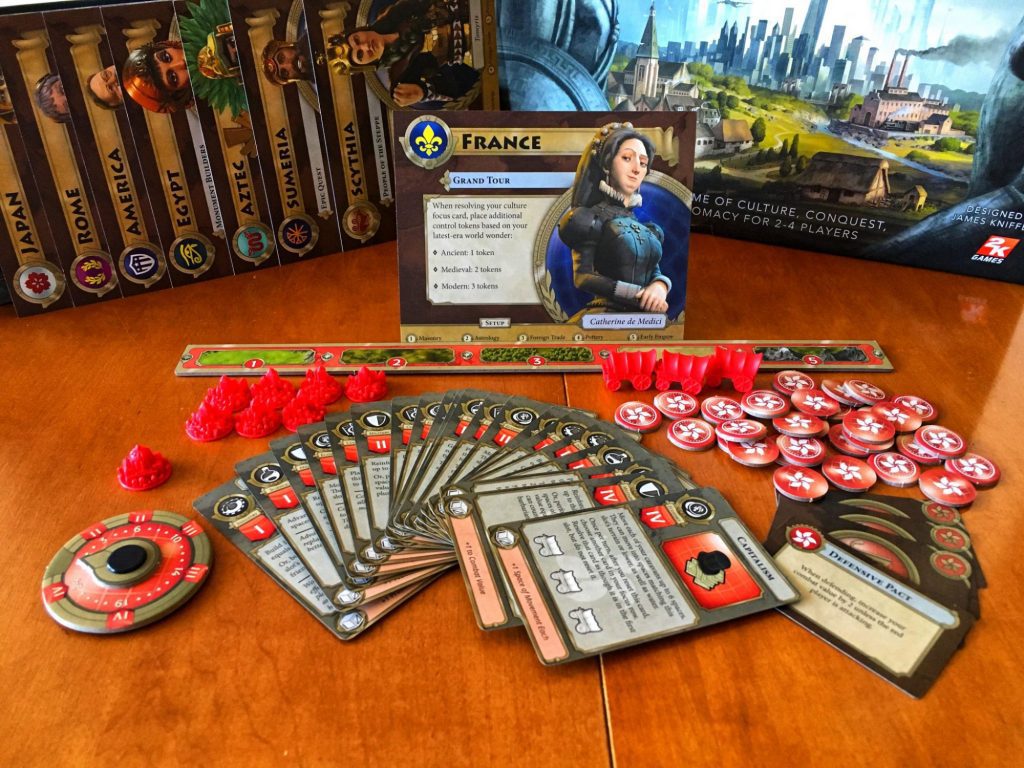
Players will then construct the map on which the game will be played. If it is your first game, the rulebook offers a suggested map setup to use. Otherwise, players will begin the map construction by selecting four random tiles to form the central core. Two of these tiles must each have a natural wonder and the other two must each have a city-state. Each player then draws a hand of three map tiles and one starting tile with their capital city. Following some placement restrictions found in the rulebook, players will construct the map in turn order by laying a single tile from their hand. Map tiles are double-sided so players are given the freedom to choose which side they add to the core, changing the availability of resources, the number of barbarians, and the presence of natural wonders and city-states.

Then three victory cards are chosen randomly and placed face up next to the constructed map. Each card has two possible victory conditions and a player must complete one on each of the three cards to win the game.
The Focus Row
The action selection in Civilization: A New Dawn is a card-based system which uses the focus row, consisting of a focus bar and focus cards for each player. The card action a player can choose and the strength of this action are determined by the card’s position in a player’s focus row. A card in the first slot (under the 1 on the focus bar) will be considerably weaker when activated than if it were in the fourth or fifth slot. Whenever a player performs an action on their turn, their focus cards will shift to different slots. When a card is activated for its action, that card moves back to the first slot of the focus row and all other cards shift right towards the fifth slot. A focus card remains in the fifth slot of a player’s focus row until its action is used. Thematically the process of shifting focus cards represents a civilization’s investment of time in a certain area; a card resolved in the fifth slot will have a greater impact than a card resolved in the second slot, for example.

The Tech Tree
Each player begins the game with the same five level I focus cards. The starting position of a player’s focus cards is determined by their civilization’s leader sheet. Over the course of the game, players will use their science focus card to advance their progress on their tech dial.

When a player’s tech dial reaches or passes a Roman numeral, they immediately choose a card from their supply of focus cards in that level. This new card will replace the focus card of the same type currently in a player’s focus row.
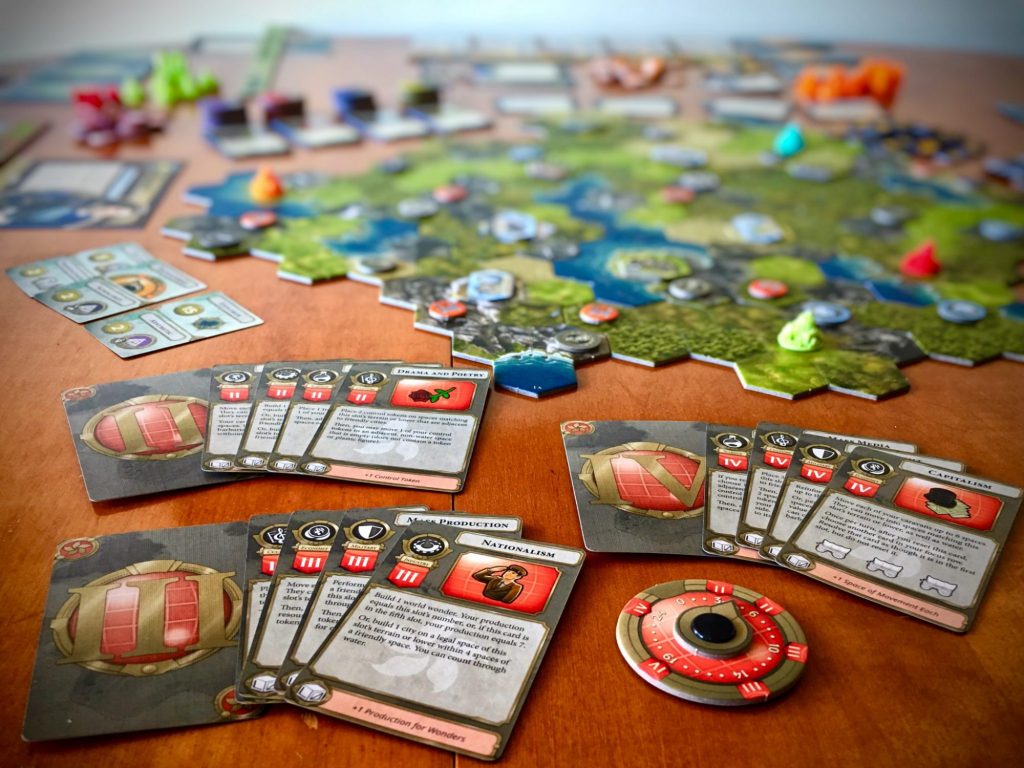
For instance, when a player reaches 3 on their tech dial (II), they choose to replace their level I military focus card (masonry) with their level II military card (iron working) and remove the level I card (masonry) from the game. Players are not required to upgrade their focus cards in order so, as the game progresses, it is possible for a civilization to jump from a level I focus card to a level III.
A Player Turn
A player’s turn consists of three steps. First, the player begins by choosing one of their five cards in their focus row.
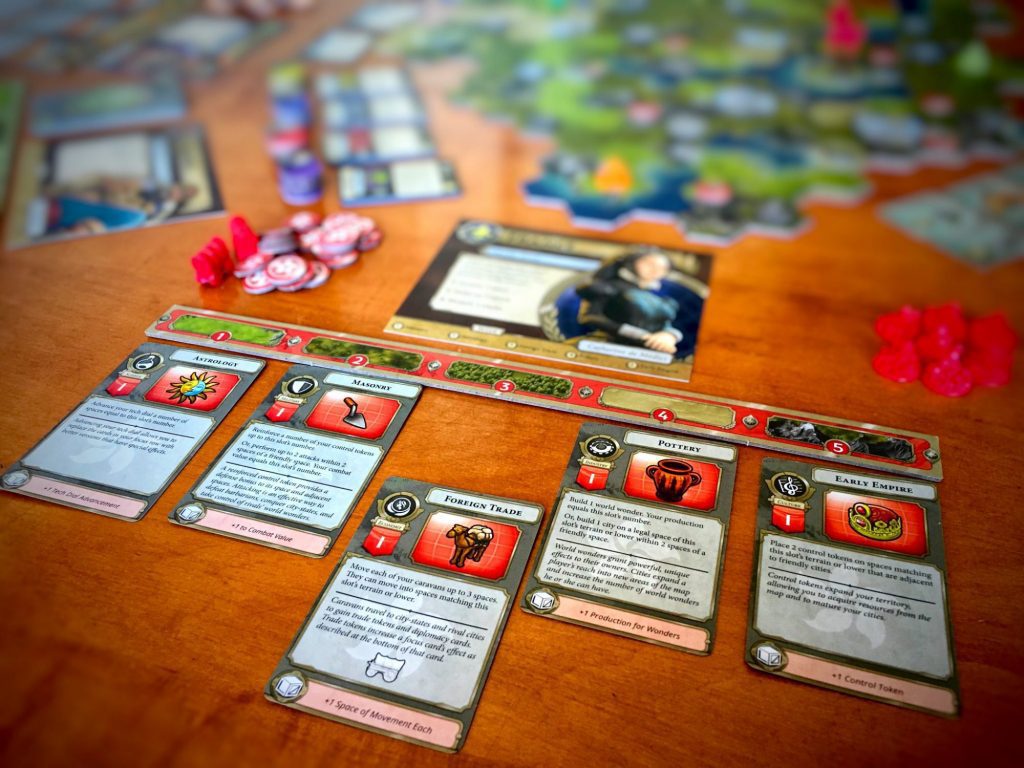
Then the player resolves that card’s effect with the strength of the card matching its current slot number. In many cases, cards will also reference a slot’s terrain, pictured above the slot number. When resolving an effect relating to terrain, a player can match the slot’s terrain or any terrain depicted above a lower slot number. Finally the player will shift the focus cards in lower slots to the right by one and reset the activated card by moving it to the first slot.
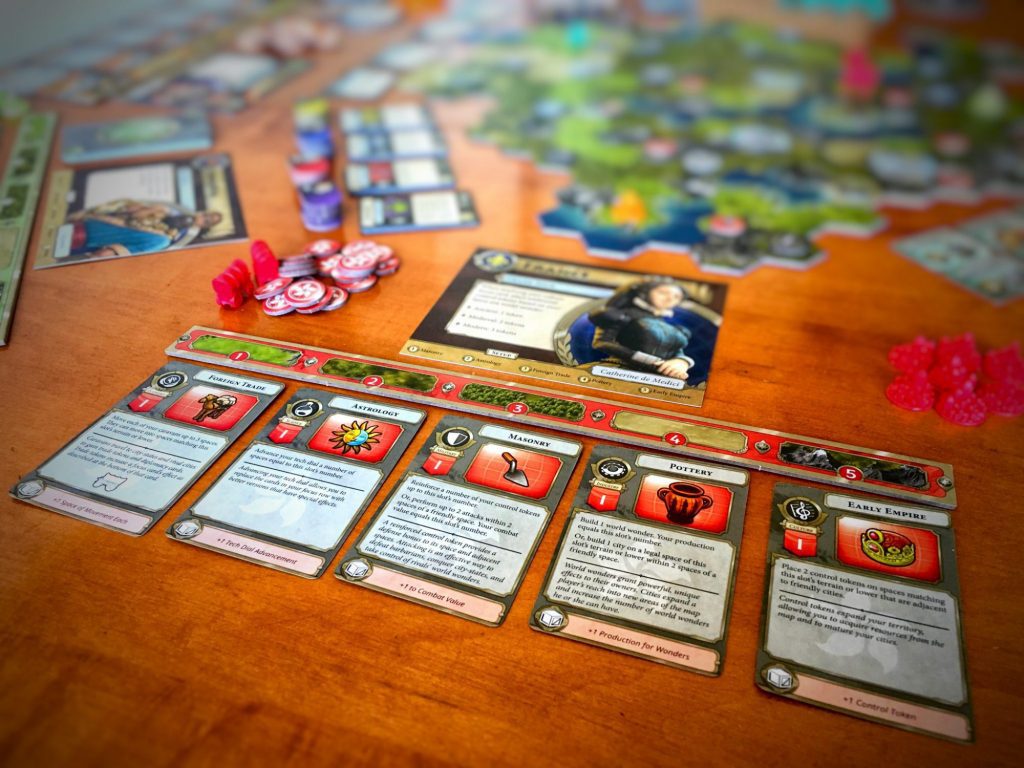
After the player resets their chosen card, play proceeds to the next player in turn order. Turns continue this way until one player achieves one goal on each of the victory cards.
Comparison
Sid Meier’s Civilization: A New Dawn is the third board game released based on his popular Civilization video games. How does this game compare to its predecessor, Fantasy Flight’s 2010 Sid Meier’s Civilization: A Board Game?
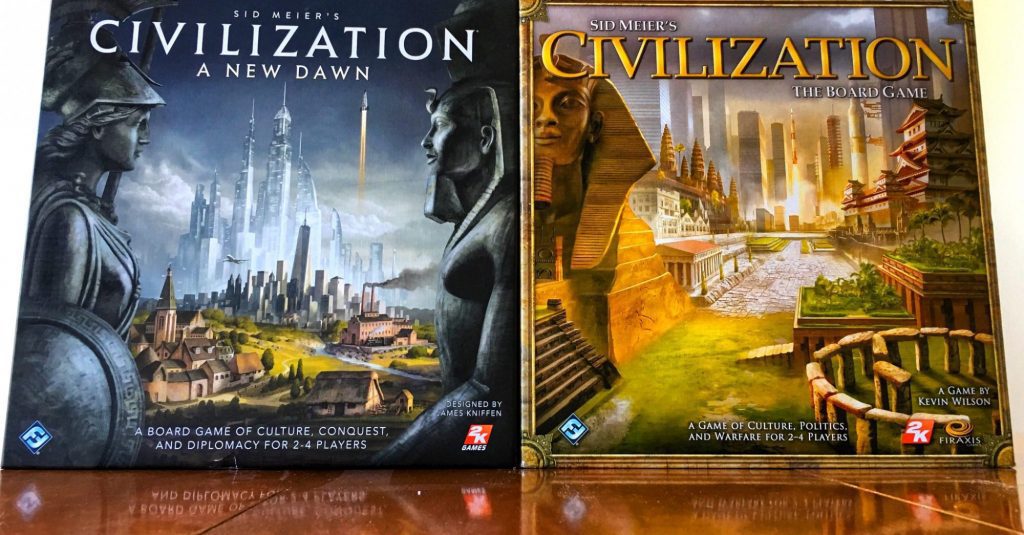
In spite of the name and shared theme, the two games are so different that they are difficult to compare. Civilization: A New Dawn prides itself on being streamlined. It plays between one and two hours, depending on the number of players, and removes many player pieces, extra boards, gameplay mechanisms, and complexity found in other Civilization games. Most notably, it removes the intricate turn actions found in the previous edition and updates them with a simple card-based system.
However, the cost of trimming to streamline means that this game has lost the essence of what makes a true Civilization game. The immersion and investment a player feels when playing the 2010 Civilization game disappears with this new release. Players are more removed from the experience and turns become quite mechanical with much of the dynamism and interaction between players lost. For instance, in Civilization: The Board Game players must take the time to build up their military forces by acquiring or upgrading units to ensure their success in battle.
Alternatively, basic combat in A New Dawn consists of a player activating their military card in their focus row and adding its slot number to the roll of a six-sided die. The conflict resolution in this latest release is among one of many thematic concepts that have been abstracted out of the game. Others include hidden, undiscovered map tiles, changing governments, disasters, player negotiation, and wounded military units. Civilization: A New Dawn merely draws some thematic inspiration from 2010’s Civilization: The Board Game and cannot be fairly compared to its predecessor because it just dabbles in the Civilization experience.
Final Thoughts
Civilization: A New Dawn provides an enjoyable experience and it is a solid, well-designed game with a unique and appealing card-based action system. This easy-to-learn game is a good introduction to the Civilization gaming experience because it maintains the framework of other, more dense Civilization board games without many of the complications that accompany them. In spite of that, if you go into this game with the expectation that it will be comparable to other Sid Meier Civilization board games then you will be disappointed. This game has lost most of the theme and player immersion typically found in those games because it has been developed to play quicker and more smoothly. If you are looking to take your first step towards a Civilization experience or are simply willing to settle for one that is streamlined, then be sure to check out Civilization: A New Dawn.


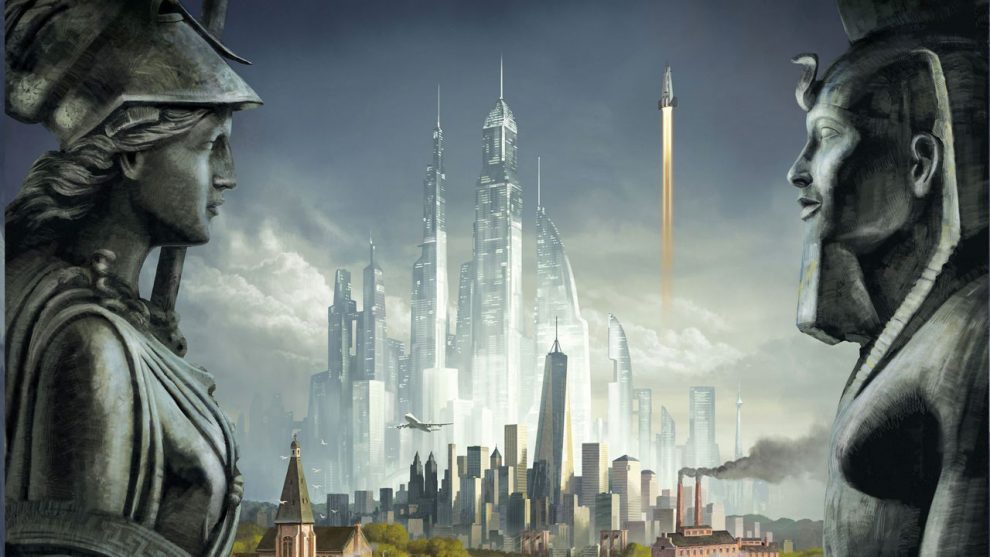

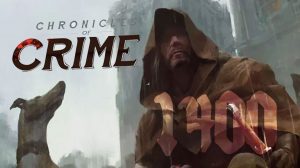
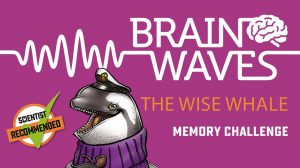
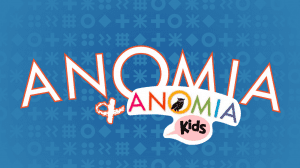




Thank you for this review. I almost bought the 2010 version by accident thinking its similar to the New Dawn edition.